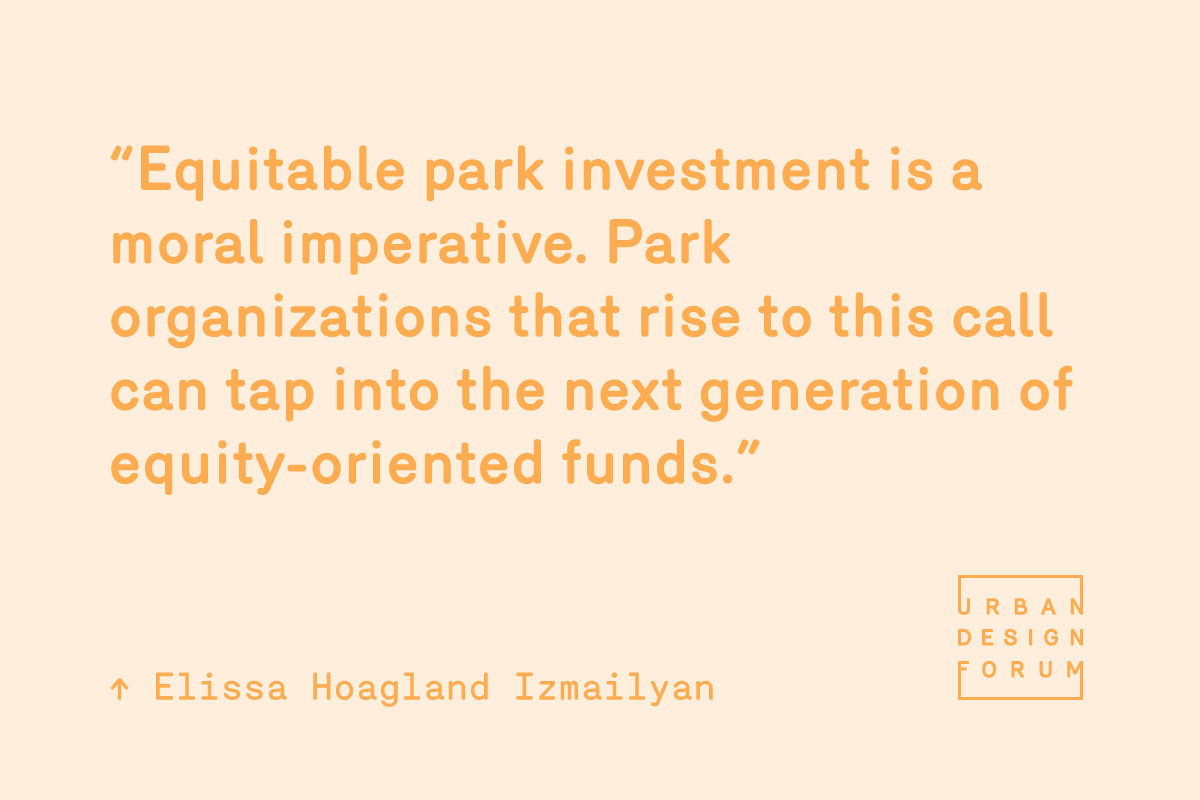
Parks really can serve a social equity mission. Let a commitment to equitable design, operations, and maintenance, inform park funding strategies.
By Elissa Hoagland Izmailyan
We are living in one of the great eras of urban park investment, facilitated by growing recognition of the value of parks. This value provides a rationale for public and private funding, which entrepreneurial park organizations have secured through earned income, value capture, and philanthropy. However, this now established public-private funding model—pioneered by Bryant Park and others—has limited applications outside downtowns and transitioning communities. The resultant concentration of public-private investments compounds persistent geographic inequality in park provision. To achieve an inclusive future, park organizations must set clear goals for social equity, match their aspirations with policies, and support these efforts with appropriate resources.
When it comes to the role of parks, social equity has multiple interpretations with potentially divergent policy responses. For example, maximizing fiscal return on public park investment funds public coffers and the social safety net, but is unlikely to deliver geographically equal services. Nor should uniformity be the goal; each community has its own needs and priorities. Equitable park investment must be measured through the lens of its beneficiaries—users and communities of all backgrounds—and the range of social, environmental, and (yes) economic benefits to each.
Equity-focused park organizations incur new costs (e. g. for neighborhood investment), while at the same time their value capture and earned income funding may be constrained relative to the established funding model. However, as park organizations pursue equity goals, they are finding new funding opportunities, such as:
Curating equitable neighborhood development outside of park boundaries. For example, Buffalo Bayou Park Conservancy in Houston is undertaking a neighborhood plan (in collaboration with community partners and the City of Houston) to shape its next phase of park development. The Conservancy is exploring land acquisition and joint development to realize this vision and access funding.
Targeting public park funding to social equity performance expectations. The Minneapolis parks department uses social equity metrics to evaluate potential park and recreation center funding needs.
Leveraging social and environmental benefits (e.g. public health) for value capture funding. Partnerships with private businesses (e.g. healthcare providers) and other public departments or agencies (e.g. school districts) can expand the resources available to deliver community benefits. Commitment to equity can also attract new sources of philanthropy.
Pursuing early wins. Destination parks, most of which are located in or near down-towns, can deliver equitable outcomes with communications, outreach, and programming that proactively engages with the diversity of their cities. For example, The Friends of the High Line engaged the residents of adjacent public housing and developed targeted programming based on their feedback. Additionally, organizations can promote equity from the inside out with a commitment to staff and board diversity reflective of park constituents.
The preceding generation of public-private investment demonstrated that a compelling vision for the future can attract new sources of funds. Equitable park investment is a moral imperative. Park organizations that rise to this call can tap into the next generation of equity-oriented funds.
–